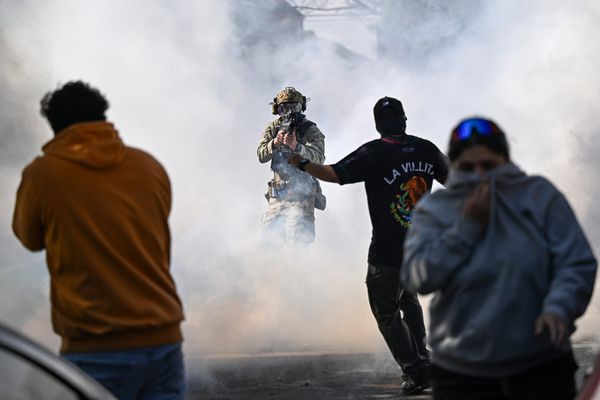

Being a good manager isn’t just about managing and overseeing player transfers; you need to guide your players on what to do on the field. Football Manager 26 is out in early access, and we know winning games isn’t just about who has better players anymore. Mastering the ins and outs (literally) of team tactics has become essential, and that’s exactly what we’re talking about today.
A major feature in FM26 is the introduction of In-Possession and Out-of-Possession phases. These two phases have split everything down the middle: roles, tactics, behaviours, etc. This is why we’ll be covering tips and tricks for mastering in and out of possession tactics. These should give you a good idea about what behaviours to pick and how to build your offense from scratch.
In-Possession Phase

The In-Possession phase is all about building up your attack while moving as a unit to create space. Gone are the days when you could simply sprint through the opponent’s defensive line; now you’ll need a lot more firepower. This is where different passing styles, tempos, and on-field behaviours come into play.
Typically, there are three parts of your offensive buildup. Bringing the ball forward with your defense, creating space with your midfield while maintaining possession, and finally, getting the ball through to your offense to score. You’ll need to manage how players act in each phase, so we’ll break it down for you.
Attacking Width
- Narrow
- Standard
- Wide
Depending on your team’s strengths, you can opt for any of these widths. Standard is a good place to start since you can deviate both inside and outside depending on the opposing defense. If you prefer playing on the wings, you can opt for wide, and vice versa for narrow.
Do remember that each option comes with drawbacks. Having players play on the wings will leave you open to a counter-attack from the center since your players will be positioned further apart. Picking narrow limits your options while creating space, since the opposing defense can easily converge on your midfield to get possession.
Passing Directness
- Short
- Standard
- Direct
Passing goes hand-in-hand with tempo (which we’ll talk about next). Short passes are great for low-tempo plays where you prefer a slow build-up while keeping possession. This allows your players more time to get into possession and can fatigue opponents as they chase the ball.
Similarly, direct passes are great for explosive offensive plays. You can easily lob the ball over the opposing midfield, right into your striker’s feet. This is a bit riskier since there’s a higher chance of interceptions. However, this is ideal for catching the opponent off guard and getting to their goal before they realise what’s going on.
Tempo
- Lower
- Standard
- Higher
We talked about how tempo and passing directness complement each other. If you want a lower tempo, you can’t go for direct passes since they’re made to cover greater distances. A lower tempo is good for teams that rely on creating space for the offense and tearing apart the opposing defense. You can make short passes, using the one-touch pass to increase passing frequency.
Higher tempos are used by teams that have very strong offenses, usually against teams with weaker midfields. These are also great for counterattacks. With the opposing team mostly in your half, their half is left exposed. Use a high-tempo tactic to quickly get the ball to your CF before defenders can catch up to them.
Scoring
- Work the ball into the box
- Hit early crosses
- Shoot on sight
You’ve got the ball up to your offense, now it’s time to decide how the final phase plays out. Here, there’s no neutral option. Depending on your team, you can choose to either slowly play the ball into the box through short passes. This gives you a more direct and reliable shot, but takes longer and is susceptible to intercepts.
Hitting early crosses is good if you’ve outpaced the defense and are playing on the wings. This works well with a wide attacking width. Shoot on sight is the riskiest and most aggressive option. You won’t get a lot of shots on target with this one, but you’ll definitely keep your opponent under pressure.
Mentality
- Adaptable
- Structured
This is the final factor in completing your in-possession phase. The two options, adaptable and structured, refer to how your players will react according to the game state. With an adaptable mindset, they might make riskier plays if they see an opportunity to get ahead. Structured, on the other hand, makes them play safer, and according to the set tactics.
Out-of-Possession Phase

We’ve covered the in-possession phase in depth. But what about when you lose possession? Time to fall back, or rush them to get the ball back? These are choices you can make while choosing match tactics. Just like for the in-possession phase, we’ll break down all the choices to give you a better idea.
Defensive/Engagement Line
- Higher
- Standard
- Lower
Managing your team’s defensive line is one of the most important parts of a good defense. Do you want them to engage at the halfway line in an attempt to stop the build-up? Or are you more comfortable staying in your half and letting the opposing offense come to you? If you pick a higher defensive/engagement line, your team will opt for the former. While a lower defensive line will choose the latter option.
With a higher defensive line, you risk a weak backside. If your opponents can get the ball through your defense, your goalkeeper will be on his own. On the flip side, a lower defensive line allows you to build your defense, but the offensive build-up will also be stronger. More opposing players will be in your half and have sustained passing, making it difficult to break through.
Pressing Intensity/Tackling
- More Urgent/Get Stuck In
- Less Urgent/Stay on Feet
The next part is pressing and tackling. How aggressive do you want your players to be once they’re in proximity? This is what you control with Pressing Intensity/Tackling. If you opt for a more urgent approach, your players will stay on target and try to get the ball back.
However, if you choose the less urgent (or Stay on Feet) option, your team will stay in position and wait for another teammate to intercept them. Again, this is highly dependent on your team composition and your playstyle. Always make sure you’re comfortable with your chosen playstyle and be adaptable.







